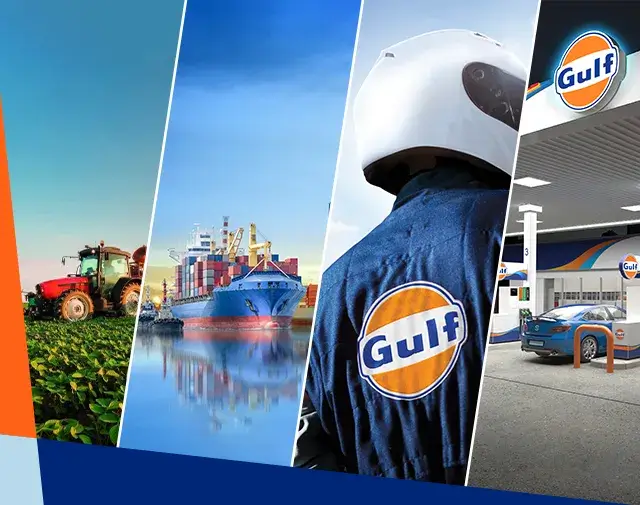Optimising Fleet Performance With Integrated Strategies
12 Jun 2025

In Europe alone, there is a fleet of around 6.4 million medium and heavy-duty commercial vehicles in operation. With such a high number of fleets on the road, fleet managers need new and innovative ways to improve the performance and longevity of their vehicles.
This recent whitepaper on optimising fleet performance explores the challenges that fleet managers are facing to keep costs low and how they can be overcome by optimising fleet performance.
This article summarises the key findings of the Whitepaper, including:
- Challenges faced by fleet managers
- The role of lubricants and fluids in fleet performance
- Fuel efficiency: Maximising operational efficiency
- Adapting to regulatory changes and technical innovations
- Regional and application-specific fluid strategies
- Leveraging telematics and data-driven insights
- Planning for future fleet sustainability
Challenges faced by fleet managers
Globally, fleet managers are met with a growing pressure to reduce costs and improve performance. There are a number of challenges that impact how they manage their fleet to work as efficiently as possible. Some of the challenges fleet managers are facing include:
- Rising Costs: From fuel and maintenance to driver wages, the Total Cost of Ownership (TCO) is escalating.
- Regulatory Pressures: Meeting strict emissions standards, such as China 6 fuel regulations in China, demands advanced technologies and compatible fluids.
- Driver Shortages: Retaining skilled drivers is increasingly difficult and losing skilled employees impacts productivity.
- Aging Vehicles: Older fleets cost more to maintain and reduces operational efficiency.
- Supply Chain Disruptions: Increased delays and shortages in vehicles and parts has a direct affect on the bottom line.
Overcoming these challenges requires a holistic approach to fleet management in order to improve overall efficiency.
The role of lubricants and fluids in fleet performance
Commercial lubricants are essential for improving vehicle efficiency, and they can also reduce wear and downtime. Correctly lubricating the engine, transmission, and power steering systems can significantly enhance vehicle efficiency. In this whitepaper on fleet performance, we found:
- Low-viscosity engine oils can improve fuel economy by 0.4% to 1.5%, reducing overall fuel costs across a fleet
- In colder conditions, an oil cooler can warm transmission fluid, saving up to 0.3% on fuel, while in warmer climates, it prevents overheating and reduces wear
- Optimal power steering fluid enhances steering response, contributing to vehicle safety and extending the fluid’s lifespan
By using the right engine oil as part of a wider lubricants plan, you can prolong the life of your vehicles and increase the overall efficiency of your fleet. Lubricants are used to minimise friction, reduce wear, and protect against corrosion so engine components can function efficiently and last longer.
Using the right Commercial engine oil is critical in order to extend engine life as they prevent deposits and soot buildup, which can otherwise impair engine performance and increase downtime
Aftertreatment Systems
Aftertreatment systems are devices, or methods, of converting and cleaning harmful exhaust gasses so that commercial engines meet emissions regulations. They require multiple parts and sensors to operate in harsh conditions, leading to faults and short circuits from contamination and build-up.
- Identifying the immediate issue with diagnostic tools without highlighting other potential causes
- EGR coolers can become blocked with soot and impact performance
- SCR faults include clogging, sensor failure and injector failures
- DPF can experience ash build-up and create back pressure
- Additional costs to replace components that haven’t been properly maintained
To help prevent these issues, use low-medium ash, low-viscosity lubricants.
Fuel efficiency: Maximising operational efficiency
Many elements impact overall fuel consumption, but understanding what they are can work towards improving overall efficiency. Strategies for maximising fuel efficiency include:
- Regular vehicle maintenance can result in fuel savings of 5-10%
- Telematics to track driver performance and improve driver behavior
- Planning routes in advance can help avoid congested areas, road works and unsuitable terrains
- Ensuring there are no air leaks in the brake system, wheels are correctly aligned, and the correct tyres and pressure are used
Using the correct fluid to keep your vehicles running smoothly can contribute towards efficiency. For example, maintaining the DPF by using correct fuel, oil, and regular cleaning can impact fuel economy by as much as 2%.

Adapting to regulatory changes and technological innovations
Emission standards vary worldwide, and many markets are shifting towards fleets with alternative fuels, such as electric and hydrogen-powered vehicles, to meet targets. These require additional fluids such as:
- Transmission oils
- Powered steering fluids
- Hydraulics
- Linkages
Adopting alternative fuels will be a learning curve as these engines require different maintenance. However, by making these operational changes, you can ensure you are adhering to regional emissions standards as they become tighter over the coming years.

Regional and application-specific fluid strategies
Developing a fluid strategy is nuanced and should be tailored to geographical climate conditions and specific operational needs. Not only that, you will also need to consider any regional regulations and requirements. Some considerations include:
- Stringent emission regulations like EPA Regulations in North America
- Stable oil viscosity in climates with temperature extremes
- Rust and corrosion resistance in areas of high rainfall and humidity
- Harsh environmental conditions like dry and dusty terrains
- Whether the vehicle is used on or off road
In each of these environments, your vehicle will require different fluids to support proper operation and maintenance. So, it’s important to understand your fleet’s needs so you can choose the right fluids to optimise performance and longevity.
Leveraging telematics and data-driven insights
There is a growing trend surrounding commercial vehicle software which can impact performance, monitoring, updateability and increase real-time visibility. Accessing remote diagnostics can help you make informed decisions about preventative maintenance and repairs, saving time and money in the long run.
In addition, using real-time data from telematics systems can help to optimise:
- Routes
- Scheduling
- Driver productivity
Utilising digital innovations to your advantage can lead to a reduction in costs and improve overall fleet performance.

Planning for future fleet sustainability
As emissions standards become tighter globally, adopting more sustainable habits within fleet management is key. If you have multiple diesel vehicles coming towards the end of life, it might be more economical to replace them with hybrid or electric alternatives to adhere to emissions standards.
Other trends on the horizon which need to be considered include:
- Total cost of ownership (TCO) is expected to be the same for heavy-duty electric trucks and diesel trucks by 2028
- Using the correct formulation of lubricants will remain crucial to operation and maintenance, regardless of fuel type
- Zero-emission vehicles will grow in popularity, but existing vehicle challenges and fluid requirements will remain
- Software-defined trucks are growing in popularity, increasing the visibility of performance and improving decision-making around preventative maintenance
While there is a lot for fleet managers to consider, understanding the future landscape now is essential to make informed decisions for long-term success.
Integrated fleet management for long-term success
There’s no single solution to improving fleet performance, so an integrated plan is key. With a holistic approach to maintenance, fluid and lubricant management, operating costs and technology, fleet managers can begin to improve the efficiency and reliability of their commercial vehicle fleet.
To gain further insights and start planning for the future, download this Whitepaper to learn more about how to optimise your fleet performance.

